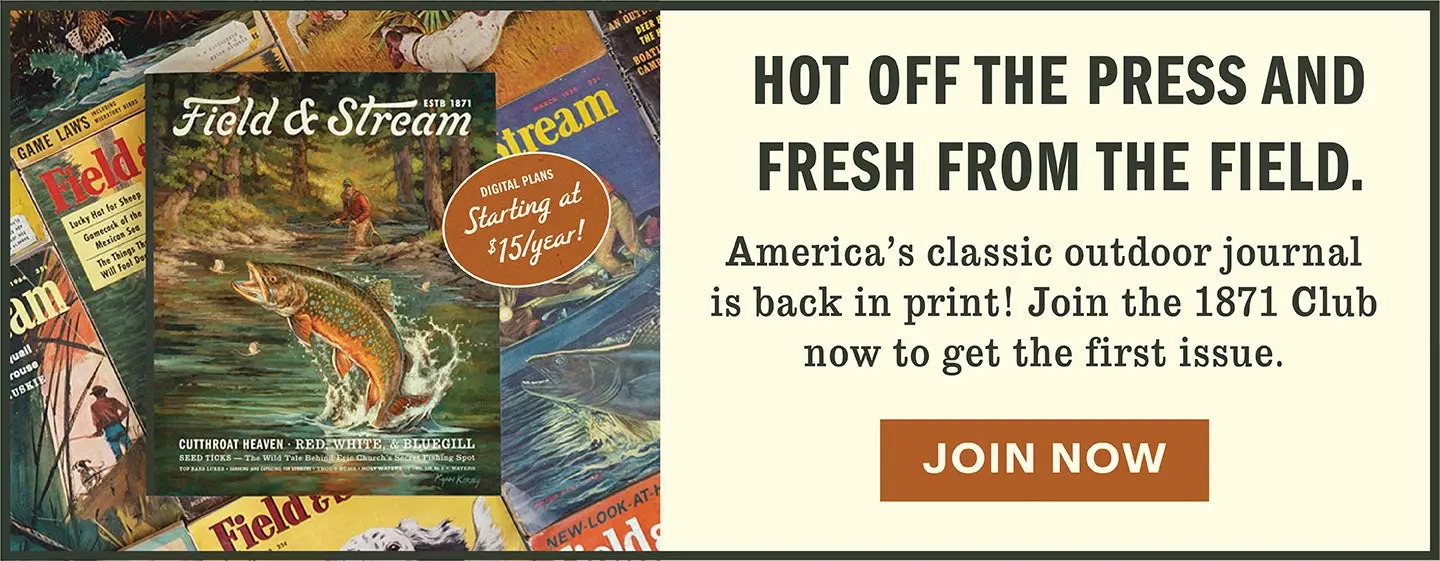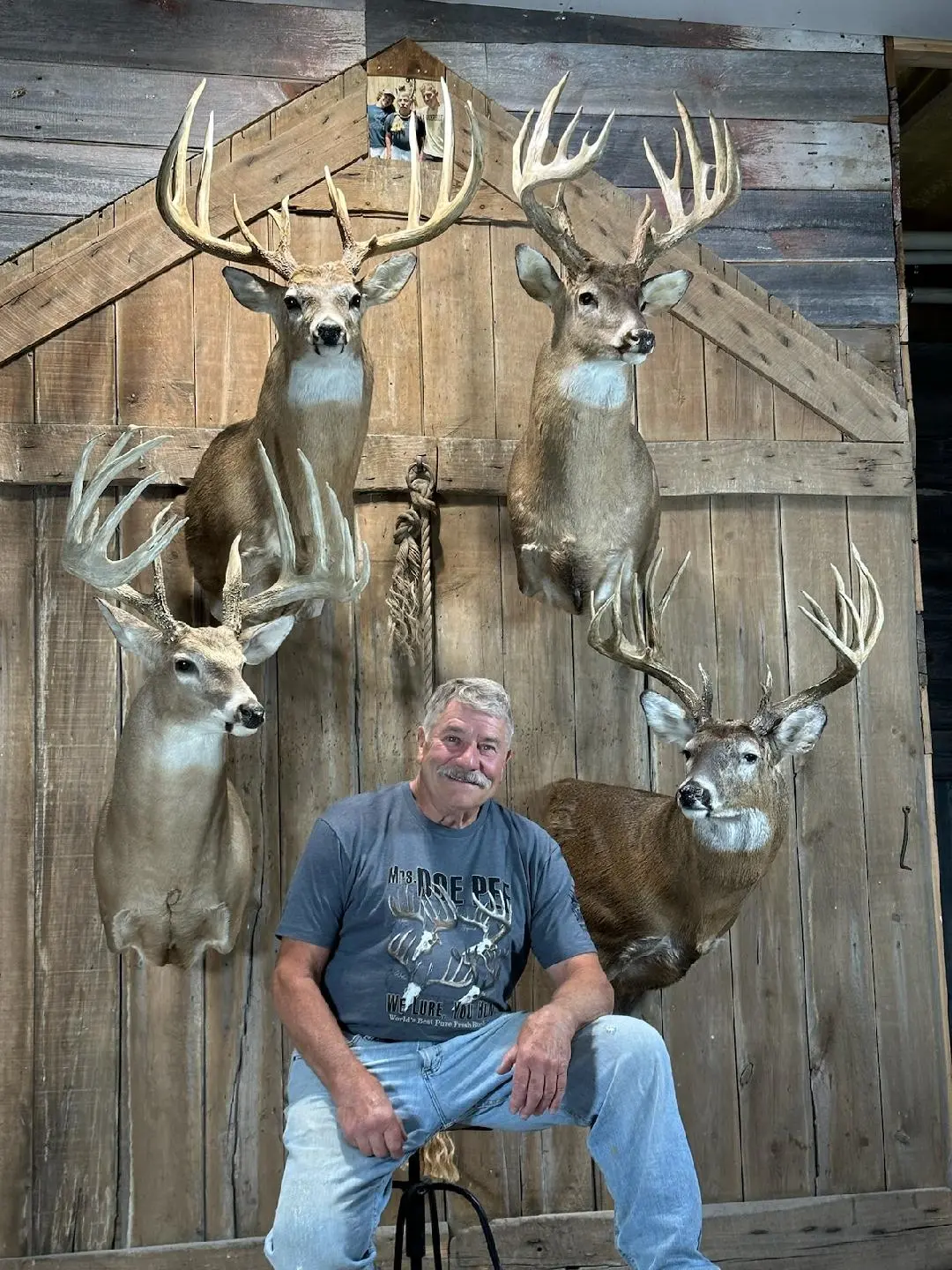We all know highly successful deer hunters, people who seem to tag a great buck every season, no matter what the circumstances or how much other hunters may be struggling. But even the savviest deer hunters meet their match every now and then, and in some ways, the bucks that beat the best are more interesting that the ones on their walls. So, with that in mind, below is the first installment of a series we’re calling “The Bucks That Go Away,” in which we look at mature bucks that have given an ace hunter the slip and the hard lessons learned in the process.
To kick things off, we’re starting with maybe the hardest lesson of all—one that came at the cost of a potential world-record archery buck. Here’s the story.

Learn how to get the all-new Field & Stream journal!
The Hunter: Sam Collora, Iowa
Sam Collora is one of the country’s elite whitetail hunters. The owner of Mrs. Doe Pee Buck Lures
, Collora was thrust into the limelight in 1996, when he arrowed a southern Iowa monster that, at the time, was the highest-grossing typical buck ever killed with a bow. The gross-233-inch colossus became known as the “Collora Buck.” But the hunter wasn’t finished with that giant. In the 28 years since, Collora has tagged three other bucks that grossed over 200 inches, along with many other mature whitetails. He is normally certified death on any buck that catches his attention, but yet another monstrous whitetail gave Collora the slip some years back—and taught him some lessons he’ll never forget.

Collora with his four biggest bucks, all grossing more than 200 inches B&C. The well-known “Collora Buck” is at lower left. Sam Collora
The Buck That Got Away
The very next fall after Collora killed his famous namesake buck in 1996, the Iowa expert encountered another Hawkeye State whopper. “This buck was even bigger,” Collora told F&S. “I’m convinced it was the brother or son of the buck I’d killed the year before, because the frame and configuration of the rack was almost identical. The only difference was this new buck was an almost perfect typical 6×6. I honestly felt like he had a shot at breaking the archery typical world record. And he was a huge-bodied deer. I estimated the buck I’d killed in ‘96 was at least 325 pounds live weight, and this buck was as big or bigger.”
Collora first spotted the buck when he was out making mock scrapes with his wife, Judi in the fall of 1997. “We raise deer, and between that and hunting where we do, Judi has been around big bucks for many years,” Collora said. “When we jumped this buck, Judi looked at huge deer trotting off and just said, ‘Oh my God.’ He was that big. I knew after that encounter that the buck was the largest whitetail I’d ever laid eyes on—and all these years later, he still is.”
Collora is a savvy scouter and knows big deer, so he started piecing together what the buck was doing from the sign he left. “This was before trail cameras—which I don’t use much anyway, even now—so I just looked at tracks and rubs and scrapes. That deer left a huge track, so it was pretty easy to spot. The property where we bumped him was mostly a big CRP field, surrounded by heavy timber. I had permission to hunt the CRP but not the woods, so that’s where I focused my efforts. I felt like he was bedding on the neighboring timber and using a travel corridor on the CRP to reach a food source, which was also off the property.”
During the first few weeks of the Iowa archery season, Collora saw the buck a handful of times but never in bow range. Then, as the late pre-rut was heating up, he had his best opportunity. “I’m a huge believer in using scent, and I had made a drag-rag trail to my stand before that hunt,” he said. “For some reason, I did something I’d never done before; I made the trail as I walked to my stand, and just before I arrived, I did a 90-degree turn for the final approach. I hung the rag out in front of the stand like I always do, and settled in to wait.”
After sitting for a couple hours, Collora looked up and saw the giant buck heading his way. “He was following that drag rag trail perfectly,” he said. “And the longer he was on it, the quicker his pace got. My knees were shaking, and my heart was thumping as I got ready for the shot—and then, right where I took the 90-degree turn to reach the stand, the buck blew past the drag rag trail and continued into the CRP. He stopped in there, and like a bird dog looking for scent, just kept sniffing around. He’d lost the scent trail. I tried to coax him but had no luck; if I knew then what I know now about calling I’d have been more aggressive. But he walked off and my opportunity was gone.”
Though obviously disappointed, Collora knew the buck had no clue of his presence, plus he had the rut to look forward to. But then, he tore his bicep while unloading an ATV from a pickup truck. His doctor told him he needed surgery and that he was done bowhunting for the year. “I just smiled and said ‘Watch me.’”
Collora, in a cast, took his son’s bow and cranked it down as low as it could go and attached a leather strap to the string. “I could hold the bow with one hand and draw by biting on the leather strap with my teeth. I pretty much sucked at first, but after some practice sessions, I was getting better and better. I figured anything standing 15 to 18 yards away was going to be in trouble.” But he never saw the buck again that season.
Collora had high hopes for the next fall, and found huge tracks going into the season. “It had to be him,” he said. “But then, all of a sudden, the sign dried up and he just disappeared. I heard buzz that a huge buck had been hit by a car but not killed immediately. I kept looking for the buck or his sign but never saw either. Just like that, the hunt for the biggest buck I’ve ever seen was over.”
The Hard Lessons Learned
Of course, several factors were responsible for Collora not tagging the monster, but he was hardest on himself about the drag-rag encounter. “I almost always do a gentle, looping turn with the rag as I turn toward my stand, which allows a buck to stay on the scent. But for some reason, I varied from that that day.” In retrospect, Collora believes that the sharp, 90-degree turn he took instead caused the buck just blow right past and lose the trail. “I can still see that gorgeous whitetail following that trail right to my stand. I can remember the excitement I felt—then the disbelief when it all fell apart. It was just dumb on my part; big bucks don’t give you many chances. He’d given me a perfect one—and I blew it.”
The hunt also taught Collora the importance of hunting when a buck is most active in his home range. “I lost a week and a half of rut hunting time because of the surgery,” he recalled. “That was his vulnerable time, and I wasn’t able to hunt. I don’t believe in the ‘unkillable buck’ like some guys do. I think every deer has weaknesses; it’s just up to us to find them. But those old, mature deer are smart, and they don’t have many. They’re not going to make many mistakes, and you’ve got to be able to capitalize when they do. That buck flat-out beat me.”
Finally, the buck reinforced Collora’s knowledge that the rut can cause dramatic shifts in a buck’s core area. “I’m convinced the buck abandoned the routine I’d been hunting him on and focused his movement on a nearby property that I couldn’t hunt,” he said. “If I’d have had the chance to hunt him more after that drag-rag encounter, I might have had another chance. Sometimes the window on our best opportunity can close in a hurry when a buck starts searching more for does.”


